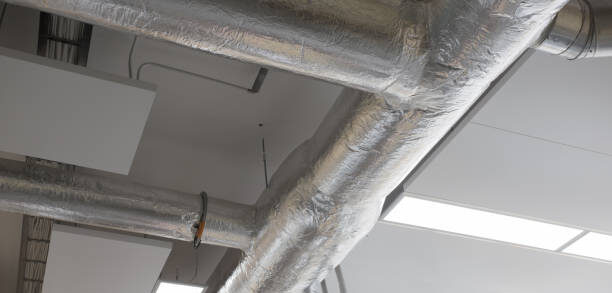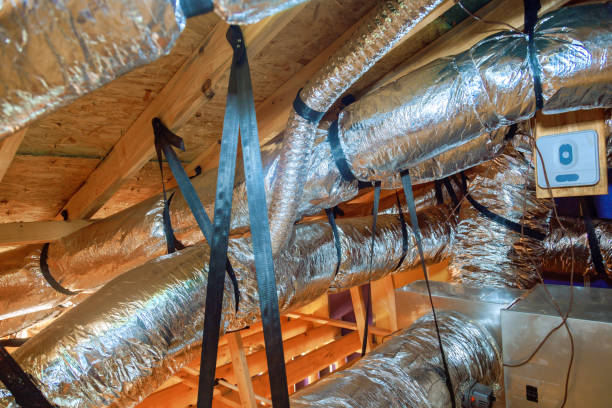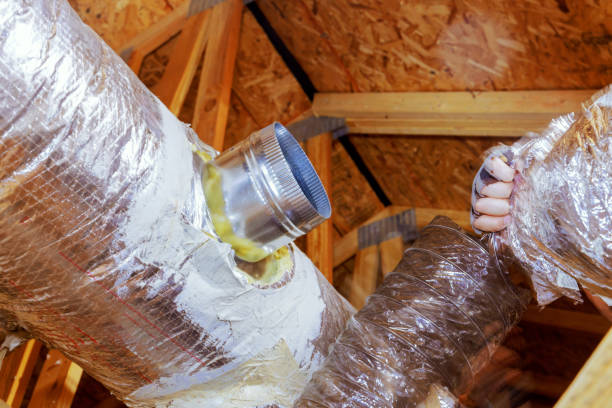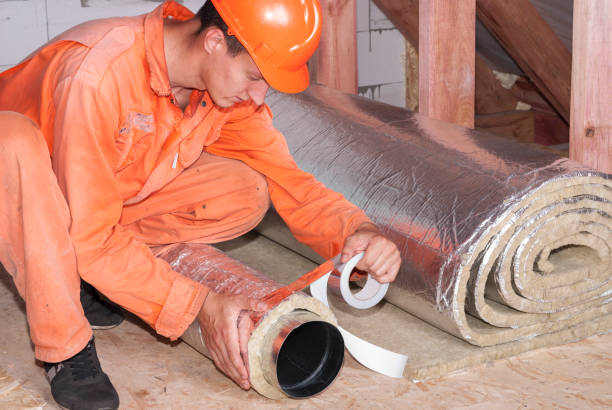
When it comes to maintaining indoor comfort, especially in regions with hot climates, ducted refrigerated cooling systems play a vital role. These systems provide efficient cooling, ensuring a pleasant atmosphere inside your home.
However, one often overlooked but crucial aspect that contributes significantly to their performance is insulation.
In this article, we will delve into the essential role of insulation in ducted refrigerated cooling systems and how it impacts their energy efficiency, effectiveness, and overall performance.
What Is A Ducted Refrigerated Air Conditioner?
Ducted refrigerated cooling systems work by circulating cool air throughout your home via a network of ducts and vents. They are known for their unobtrusive, quiet climate control and are highly effective in providing consistent cooling during hot weather.
These systems consist of both indoor and outdoor units, with the outdoor unit containing the compressor and the indoor unit distributing the cool air.
Insulation In HVAC Systems

In HVAC systems, insulation serves as a vital component that helps regulate temperature and energy efficiency. HVAC insulation typically consists of various materials designed to reduce heat transfer between components, such as ducts, pipes, or equipment, and the surrounding environment.
This insulation acts as a barrier that prevents the loss of conditioned air and minimises the intrusion of external heat, ultimately enhancing the overall efficiency and performance of the HVAC system.
Insulation Materials Used In Ducted Refrigerated Air Conditioning

Fibreglass Insulation
Fibreglass insulation consists of tiny glass fibres and is widely used due to its excellent thermal resistance properties. It is available in rolls, batts, or loose-fill form and is known for its fire-resistant nature.
Foam Board Insulation
Foam board insulation is composed of rigid foam panels made from materials like polystyrene or polyurethane. It is valued for its high insulating value and is often used in areas where space is limited.
Reflective Foil Insulation
Reflective foil insulation consists of a layer of reflective material, often aluminium, that reflects radiant heat. It is effective in minimizing heat gain or loss and is suitable for certain climates and applications.
Common Insulation Problems

Common insulation problems can arise over time, potentially compromising the ducted air conditioning system’s effectiveness.
- Inadequate Insulation Coverage: This issue arises when there are gaps or areas without insulation within the ductwork. It leads to temperature loss or gain as conditioned air escapes or unwanted heat enters the system.
- Damaged or Deteriorated Insulation Material: Over time, insulation materials can degrade due to wear and tear, moisture, or pests. Damaged insulation loses its effectiveness, resulting in decreased energy efficiency.
- Poorly Sealed Joints and Seams: Inefficient joints and seams in the ductwork can allow conditioned air to escape or unconditioned air to enter. This can disrupt temperature control and strain the system.
- Incorrect Insulation Thickness: Using insulation material with an incorrect thickness can lead to inadequate thermal resistance (R-value). This means that the insulation may not provide sufficient protection against heat transfer, impacting energy efficiency.
- Insufficient Insulation Quality: Low-quality insulation materials may not effectively resist heat transfer. Investing in high-quality insulation materials with suitable properties, such as high thermal resistance and durability, is crucial to ensure optimal insulation performance.
- Improper Installation: Even high-quality insulation can underperform if not installed correctly. Poor installation practices can result in gaps, compressions, or other issues that reduce insulation effectiveness.
- Moisture Accumulation: Moisture can infiltrate the ductwork and insulation, reducing their efficiency. This can result from leaks, condensation, or humidity.
- Pest Infestations: Pests like rodents can damage insulation, rendering it ineffective.
- Lack of Maintenance: Neglecting routine maintenance and inspections can allow insulation problems to go unnoticed.
Tips For Right Ducted Refrigerated System Insulation

Selecting the most suitable insulation material for your ducted refrigerated cooling system is crucial. Factors to consider include:
Consider Your Climate
The climate in your region plays a crucial role in determining the type of insulation you need. In hot and humid climates, opt for insulation materials with excellent moisture resistance to prevent condensation and mould issues.
Think About Energy Efficiency
Look for insulation materials with high thermal resistance (R-value) to reduce heat transfer and improve energy efficiency. Quality insulation helps maintain the desired indoor temperature while reducing the workload on your cooling system.
Insulation Placement and Coverage
Strategic placement of insulation within ducted systems is essential to prevent heat exchange with the surrounding environment. Insulation should be evenly distributed and completely cover the ductwork.
Sustainability
For environmentally conscious homeowners, explore eco-friendly insulation options made from recycled or sustainable materials. These options help reduce your carbon footprint.
Avoid Air Leakage
Properly seal and insulate the entire ductwork to prevent air leakage, which can compromise the efficiency of your cooling system. Duct sealing and insulation work hand in hand to maintain conditioned air within the ducts.
Installation Quality
Regardless of the insulation material chosen, ensure that it is installed correctly and covers the entire ductwork. Poor installation can negate the benefits of even the best insulation materials.
Routine Maintenance
Regularly inspect and maintain your insulation to address any issues promptly. Over time, insulation can degrade, and addressing wear and tear can prolong its effectiveness.
Consult HVAC Professionals
Seek guidance from HVAC experts who can assess your specific requirements and recommend the most suitable insulation solution. They can ensure that your chosen insulation material aligns with your ducted refrigerated system’s needs.
In Summary
In conclusion, insulation plays a crucial role in the performance of ducted refrigerated cooling systems. It enhances energy efficiency, maintains indoor comfort, and reduces operational costs.
For professional assistance with your ducted refrigerated cooling system or insulation needs, don’t hesitate to reach out to us.
Visit our service page for more information and fill out the contact form for personalized consultations.








